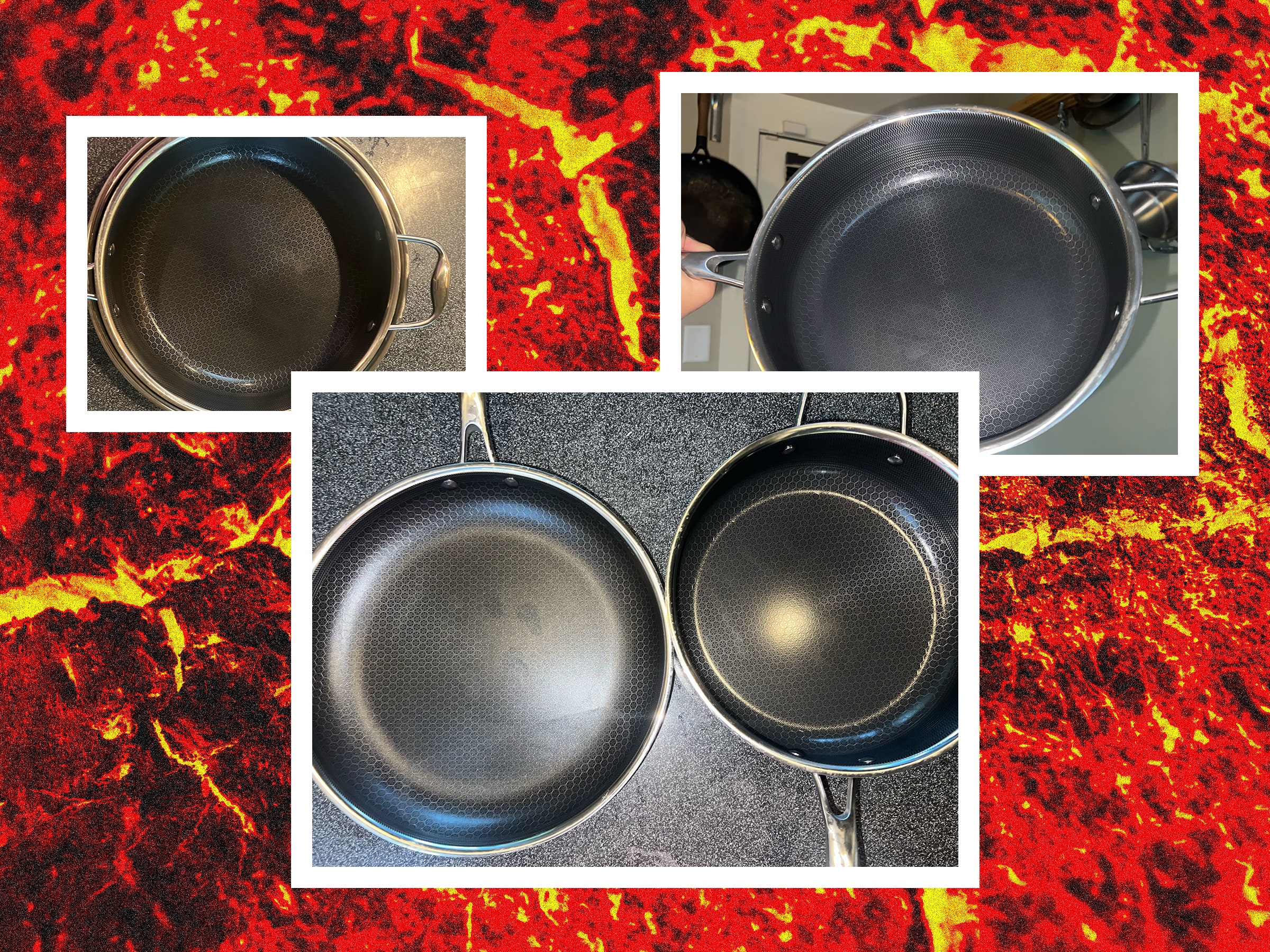The first time I used the HexClad Hybrid Deep Saute Pan, I burned myself on the “Stay Cool” handle (more on that later). I seasoned the pan with oil per the manufacturer's recommendations, I cooked some eggs, and they turned out mostly OK—but they stuck to the pan that’s marketed as “nonstick.” This led me down the path of minor inconveniences that culminated in one conclusion: HexClad cookware is like, fine, I guess. But the hybrid technology combining stainless steel and nonstick cookware isn’t all that impactful except in the bad ways, and you should just get a good stainless pan and a good nonstick pan instead.
First Impressions
When I’m testing gear, I have a rule for myself: Go in with fresh eyes. That means, as much as possible, I avoid other opinions from people—professional reviewers, friends, my pets, et cetera. I was already skeptical of HexClad due to the marketing around it, and my experience cooking on it solidified my hunch. You know when you’re shopping on Amazon and you choose to purchase gift wrap and the items arrive inside a weirdly tacky fabric bag? That’s what the HexClad pans are wrapped in (inside their boxes) upon arrival. It’s minor, but it rubbed me the wrong way. It reminded me of staying at a really nice hotel, only to discover that the sheets have a thread count of seven and the toilet paper is transparent. And then I started cooking on them. Cookware coated with polytetrafluoroethylene (PTFE), or Teflon, is generally thought to be safe, but if it’s damaged or heated past 500 degrees Fahrenheit, it can be harmful to your health. I tried to scrape the surface of the pan with a fork, and it didn't flake or scratch. That's a good thing! But on the flip side, due to the hexagonal pattern on the pan's interior surface, I don't know that I would see small scratches or chips as easily as I would on a fully nonstick-coated pan. You know what kind of cookware doesn’t have these problems? Carbon steel and cast iron. You know what doesn’t cost $179? Our favorite nonstick pan.
The $179 12-inch Hybrid Fry Pan is fine. It heated evenly and quickly, just a tad slower than my All-Clad comparison. The same is true for the $179 3.3-quart Hybrid Deep Saute Pan. But when these prices are comparable to All-Clad, which I (and many chefs) consider to be the standard, they'd better work just as well, and in my experience that just wasn’t the case. During my month of testing, I cooked stovetop pasta, eggs, and steak twice in each pan.

